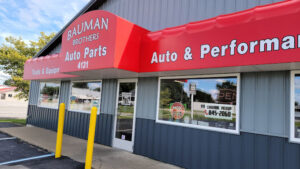As cars and light trucks are being driven fewer miles per year, creating less wear and tear, the repair sweet-spot is also changing
Fort Wayne, Ind.—Three years of depressed new vehicle sales from 2020 through 2022, and probably for the next few years, have some aftermarket analysts concerned, according to Lang Marketing. Their concern is that beginning in 2026, fewer vehicles in the repair-age sweet-spot (cars and light trucks 6 to 10 years old) will reduce aftermarket volume.
While this reasoning seems compelling, Lang Marketing believes that several key factors will fuel an increase, not a decrease, of aftermarket volume, despite the shrinking number of vehicles 6 to 10 years old on U.S. roads in the coming years.
The following are the key factors:
Sweet-Spot Age Boundaries
While the 6-to-10-year age range of the repair-age sweet-spot is a product of the wear and tear from the annual miles typically traveled by these vehicles and their accumulated mileage, those factors remain in flux.
Cars and light trucks are being driven fewer miles per year, rolling up odometer miles at a slower pace than in the past. Accordingly, accumulated mileage by vehicle age is changing. Due to those factors and the increased durability of original equipment parts in new vehicles, the age boundaries of the repair-age sweet-spot will move higher in the next few years.
Fewer Sweet-Spot Vehicles
The consequences of lower new vehicle sales during 2020 through 2022 (down about 20% compared to 2016 through 2019) are working their way through the vehicle population and heading to the repair-age sweet-spot.
Starting in a few years, there will be a significant reduction of vehicles 6 to 10 years old. During 2021, there were over 81 million vehicles 6 to 10 years old on U.S. roads. By 2028, the repair-age sweet-spot population will shrink by over 10 million, down more than 12% in this critical vehicle age range.
Mileage Shift to Older Vehicles
These additional miles on older vehicles, rather than newer ones, boost aftermarket parts and purchased service per vehicle mile. This will be repeated millions of times over the next several years, increasing the aftermarket parts and purchased service volume per vehicle mile-traveled by the aging VIO.
Shifting Sweet-Spot
As a result of low new vehicle sales, there will be an upward shift in the boundaries of the repair-age sweet-spot, reflecting changes in the age mix of vehicles and their annual miles and accumulated mileage.
Strong Aftermarket Outlook for Many Products
While some aftermarket products, such as accessories, could suffer reductions in annual volume from the decline of new vehicle sales, replacement parts (and the purchased service required for diagnosis and installation) will benefit from a VIO in which older cars and light trucks are driven more yearly miles and accumulate higher mileage.







Comments are closed.